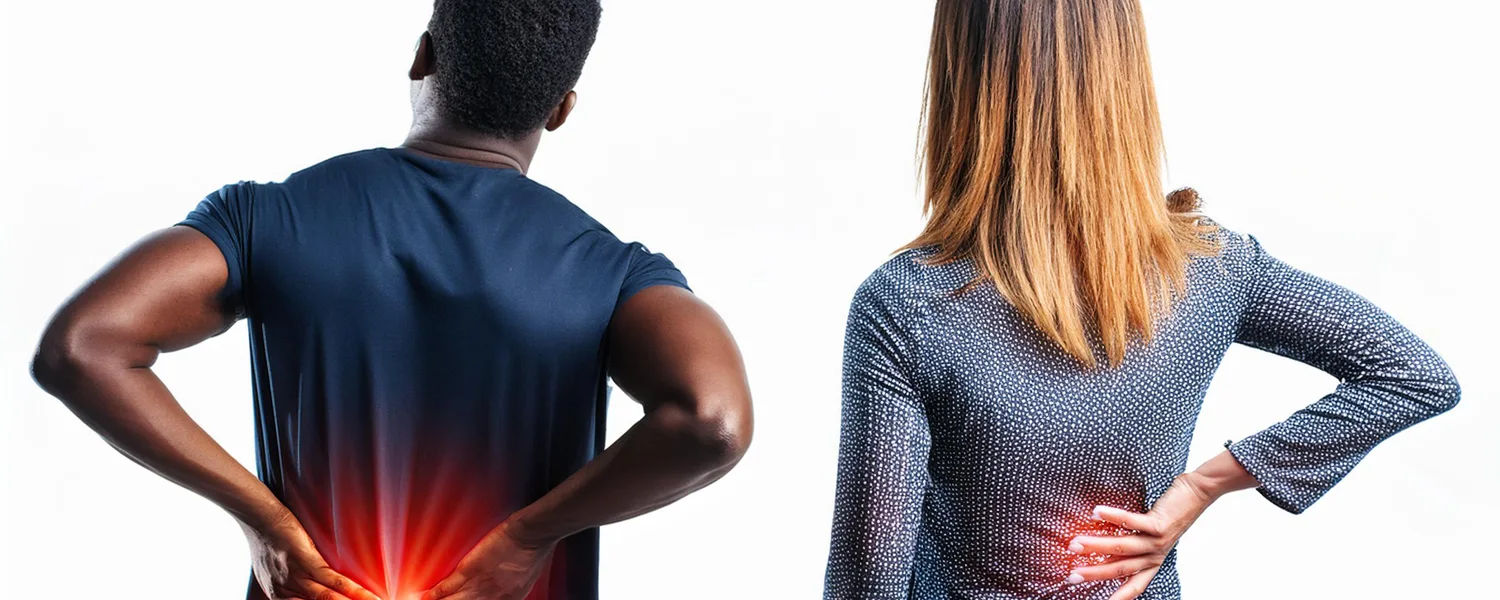Arthritis and Inflammation Tests

Lower back pain is a prevalent condition that affects millions of people worldwide, often impacting daily activities and overall quality of life. It can result from various factors, including poor posture, muscle strain, injuries, and underlying health conditions. Fortunately, there are numerous remedies—both natural and medical—that can help alleviate pain and promote healing. This article explores a range of effective strategies and remedies for managing lower back pain.
Before diving into remedies, it’s essential to understand the underlying causes of lower back pain. Some common reasons include:
1. Muscle Strain: Overexertion in physical activities can lead to muscle strains or ligament sprains.
2. Herniated Discs: Discs that have slipped or bulged can press on nerves, causing pain.
3. Arthritis: Conditions like osteoarthritis can lead to inflammation and pain in the lower back.
4. Scoliosis: Abnormal curvature of the spine may lead to discomfort or pain.
5. Poor Posture: Sitting or standing incorrectly for prolonged periods can strain back muscles.
6. Sedentary Lifestyle: Lack of regular movement can weaken muscles and promote stiffness.
Identifying the root cause of lower back pain is vital in determining the most effective remedies.
1. Heat and Cold Therapy:
Cold therapy is beneficial for acute pain. Apply ice packs wrapped in a towel to the affected area for 15-20 minutes to reduce inflammation.
Heat therapy, such as heating pads or warm baths, can help with chronic pain, improving blood circulation and relaxing tight muscles. Use heat for similar intervals as cold therapy.
2. Stretching and Exercise:
Incorporating gentle stretches can alleviate tension in the lower back. Focus on stretches that target the hamstrings, hip flexors, and lower back muscles.
Low-impact exercises, such as walking, swimming, or biking, can strengthen the core and back muscles, providing better support for the spine.
3. Posture Improvement:
Ensuring proper posture while sitting, standing, or lifting can prevent and alleviate pain. Use ergonomic furniture and take frequent breaks from sitting.
4. Epsom Salt Baths:
Epsom salt contains magnesium sulfate, which can help relax muscles and reduce inflammation. Dissolve a cup of Epsom salt in warm bath water and soak for about 15-20 minutes.
5. Essential Oils:
Certain essential oils, such as lavender, peppermint, and eucalyptus, have anti-inflammatory and analgesic properties. Dilute a few drops with a carrier oil and massage gently into the lower back.
1. Anti-Inflammatory Foods:
Diet plays a crucial role in managing inflammation and pain. Consumption of foods rich in omega-3 fatty acids (like salmon, flaxseeds, and walnuts), fruits, vegetables, whole grains, and lean proteins can support overall health and reduce pain.
2. Stay Hydrated:
Proper hydration is vital for spinal health. Water helps maintain elasticity in the spinal discs and promotes overall health. Aim for at least eight glasses of water a day.
3. Limit Processed Foods:
Processed foods, sugars, and trans fats can exacerbate inflammation. Reducing these foods can improve overall wellness and potentially mitigate pain.
1. Yoga and Pilates:
Both yoga and Pilates emphasize core strength, flexibility, and mindfulness. Regular practice can improve posture, strengthen muscles, and reduce lower back pain.
2. Meditation and Mindfulness:
Stress can contribute to muscle tension and pain. Practicing mindfulness, through techniques like deep breathing and meditation, can help manage stress and reduce perceived pain.
3. Cognitive Behavioral Therapy (CBT):
This therapeutic approach can help individuals identify and modify thought patterns contributing to pain perception. Working with a therapist to develop coping strategies can be especially beneficial.
If home remedies and lifestyle changes do not provide relief, it may be necessary to consult a healthcare professional. Here are some medical interventions:
1. Physical Therapy:
A licensed physical therapist can design a personalized rehabilitation program that focuses on strength, flexibility, and posture improvement.
2. Chiropractic Care:
Chiropractic adjustments can help relieve pressure on nerves and improve spinal alignment, reducing pain.
3. Medications:
Over-the-counter pain relievers such as ibuprofen or acetaminophen can aid in pain management. In some cases, a doctor may prescribe stronger medications.
4. Injections:
Corticosteroid injections may provide temporary relief by reducing inflammation in the affected area.
5. Surgery:
If conservative treatments fail to alleviate pain caused by structural issues such as herniated discs or spinal stenosis, surgical options may be considered.
Prevention is key to avoiding lower back pain or its recurrence. Here are some measures to consider:
1. Regular Exercise:
Maintain a consistent exercise routine to strengthen the muscles that support the back.
2. Maintain a Healthy Weight:
Excess weight can put additional strain on the back and contribute to pain.
3. Practice Good Lifting Techniques:
When lifting heavy objects, use your legs, not your back. Keep items close to your body and avoid twisting while lifting.
4. Sleep Considerations:
Use a supportive mattress and pillow, and sleep in a position that promotes spinal alignment.
Lower back pain can be challenging to deal with, but a combination of home remedies, lifestyle adjustments, and professional treatments can lead to significant relief and improved quality of life. Finding the right approach may require some experimentation, as every individual is unique. Listening to your body, being proactive about care, and consulting healthcare professionals when needed are essential steps in managing lower back pain effectively. Remember, persistence and patience are vital in the journey toward recovery and optimal spinal health.
Comprehensive Remedies for Lower Back Pain: A Holistic Approach Understanding Myasthenia Gravis Autoimmune Neuromuscular Disease
Acetylcholine Receptor Binding Antibody (AChR) Test ANA Blood Test (Antinuclear Antibodies) Autoimmune Disorder Panel C-Reactive Protein (CRP) Test C-Reactive Protein (CRP), High Sensitivity ESR Test (Erythrocyte Sedimentation Rate) Lupus Panel Rheumatoid Arthritis Test - Rheumatoid Factor (RF)